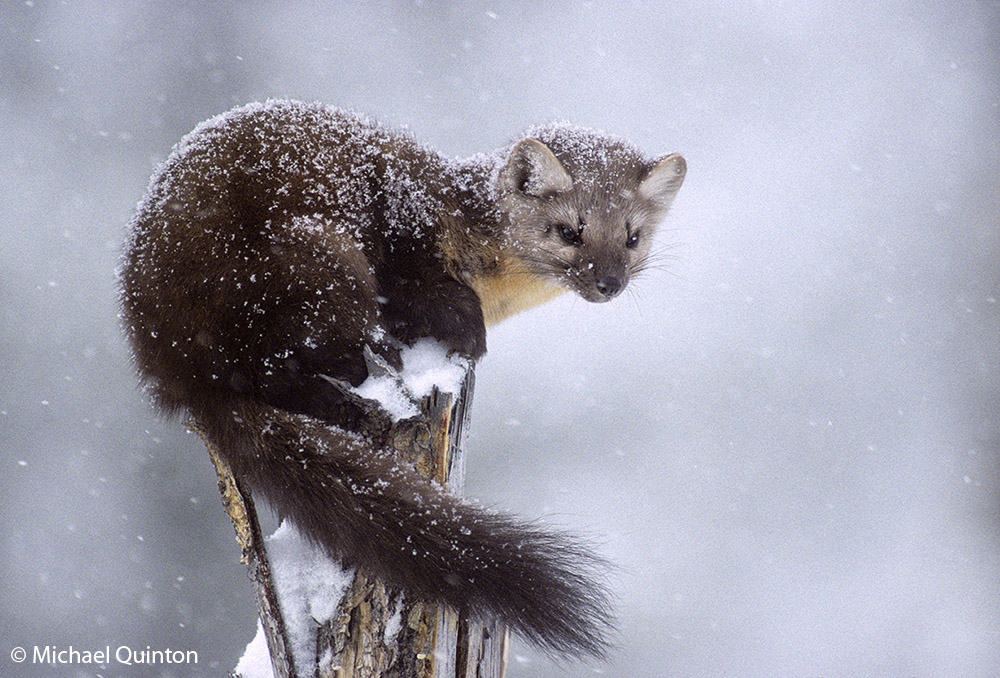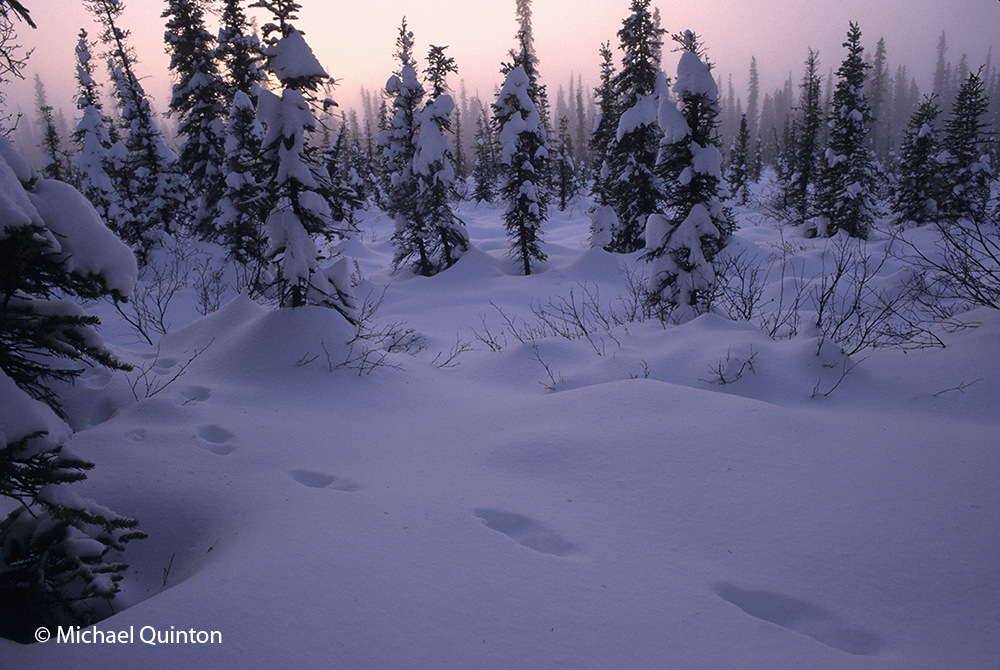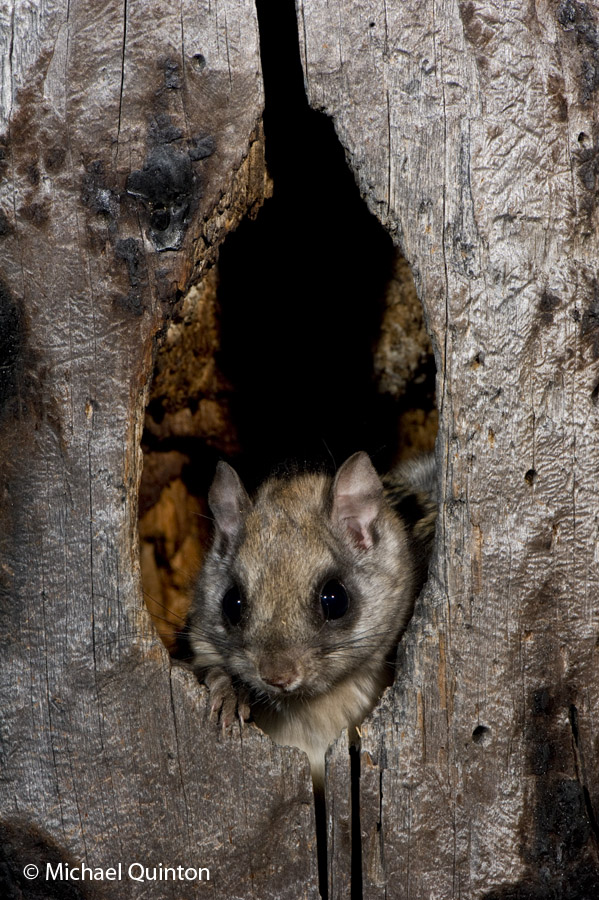 The marten scrapes out a tough living in the northern forests. The largely nocturnal members of the weasel family, prey on small birds and mammals.
The marten scrapes out a tough living in the northern forests. The largely nocturnal members of the weasel family, prey on small birds and mammals.
 A tireless traveler, the marten (Martes americana) leaves an endless line of tracks through the Alaskan wilderness. Like other members of the weasel family, martens successfully hunt quick prey like the red squirrel and snowshoe hare in deep snow. Tracks are the most common sign of the presence of martens. Following or backtracking marten tracks will tell a story of what this tough, little predator has been up to and gives clues to their habits. Though they are seldom very common, martens are not endangered over most of their range. But martens are so shy and secretive that little is known about their mysterious lives. Old growth forests with large trees and numerous standing and fallen dead trees are a martens prefered habitat, providing cover, food, shelter and cavities for their dens. Continue reading
A tireless traveler, the marten (Martes americana) leaves an endless line of tracks through the Alaskan wilderness. Like other members of the weasel family, martens successfully hunt quick prey like the red squirrel and snowshoe hare in deep snow. Tracks are the most common sign of the presence of martens. Following or backtracking marten tracks will tell a story of what this tough, little predator has been up to and gives clues to their habits. Though they are seldom very common, martens are not endangered over most of their range. But martens are so shy and secretive that little is known about their mysterious lives. Old growth forests with large trees and numerous standing and fallen dead trees are a martens prefered habitat, providing cover, food, shelter and cavities for their dens. Continue reading


